Part of this year’s Walk This Way series, sharing The Walking Classroom experiences of teachers and students across the United States, this post provides a glimpse into Caitlin Watson’s class.
When February rolled around, I could not wait! For the first time in a long time, I knew exactly what we would do for Black History Month. Instead of doing surface projects on a bunch of different important black figures in our history, we would dive deep into one incredible human, Harriet Tubman and her fight (and flight) for freedom.
Fighting for Freedom
We were about to launch into our American Revolution unit, and I really wanted my students to understand the lengths people would go to achieve freedom. I wanted them to realize that freedom is not given. It is earned by blood, sweat, tears, sacrifice, and even human lives.
Every year, students struggle to understand why the colonists would go through so much to be free of Great Britain. I knew that if I could draw a correlation between Harriet Tubman’s fight for freedom and the struggle of the patriots, that they would be able to understand the ins and outs of the Revolutionary War much better.
Plus, my kids have been through a lot. They have faced struggles I couldn’t imagine, so I knew they would feel inspired by the trials and tribulations Harriet faced and how she overcame them to achieve something great.
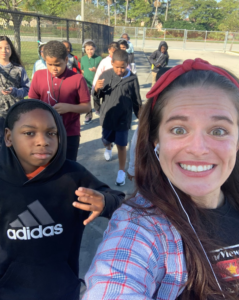 Introducing . . . Harriet Tubman!
Introducing . . . Harriet Tubman!
First, we read a Reading A-Z book on Harriet Tubman, identifying the key details and the main idea of the book. The next day we hit the trail to walk, listen, and learn about her and her fight for freedom (5-#50, Complete-#79). Before we went out, I told my students that after our walk we would compare and contrast the details in the podcast to the book using a Venn diagram.
We went out and listened to the podcast, and the kids loved it! It was the first time I had heard my students audibly gasp during a walk. They were so shocked by her life and all she accomplished.
Sharing the Learning
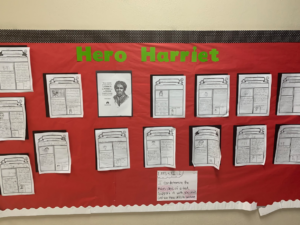 When they came back, my students couldn’t stop talking about the podcast. They filled their Venn diagrams to the brim, and they quickly jumped on their computers to find even more information about Harriet Tubman.
When they came back, my students couldn’t stop talking about the podcast. They filled their Venn diagrams to the brim, and they quickly jumped on their computers to find even more information about Harriet Tubman.
To wrap the unit up, I had them all write newspaper summaries about what they had learned about Harriet Tubman. Then, we put them (proudly!) on our bulletin board.
Demonstrating Understanding
Not only did the podcast engage my students, it deepened their understanding of main idea, details, summarizing, and provided them with an opportunity to compare and contrast. They made deep connections that have shown up in other areas of their work in the classroom.
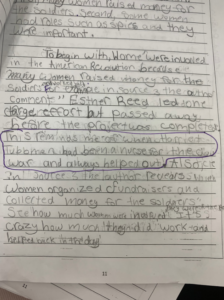 For example, they just had a writing test about women in the American Revolution (a very hard topic they didn’t know a lot about). Almost every single one of them talked about Harriet and the things they learned about in the podcast. They connected her experience with the Revolutionary experience. When I graded their essays, I saw that, as a class, these earned the highest class average we had so far!
For example, they just had a writing test about women in the American Revolution (a very hard topic they didn’t know a lot about). Almost every single one of them talked about Harriet and the things they learned about in the podcast. They connected her experience with the Revolutionary experience. When I graded their essays, I saw that, as a class, these earned the highest class average we had so far!
There are so many other podcasts that support Black History Month, so go check them out. Happy Trails!
Caitlin Watson
Fourth Grade Teacher
Diamond View Elementary




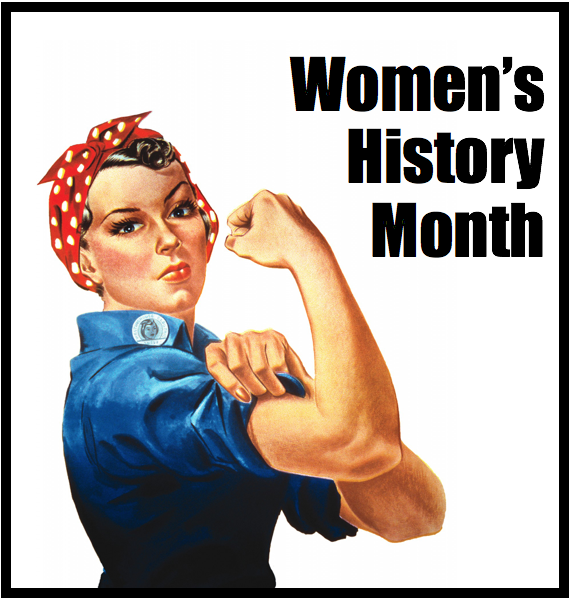
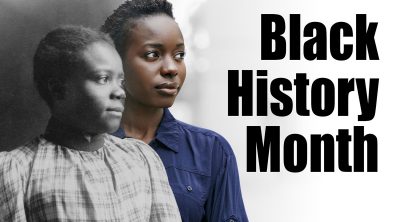
I love this as well! I love ideas on how to demonstate students understanding through writing. I also always try to use a text to introduce the topic for walking classroom, great ideas! Thank you for sharing!
Love this & your connection to the Revolution. Never thought to provide that perspective for my students during our unit but your lesson has given me inspiration!